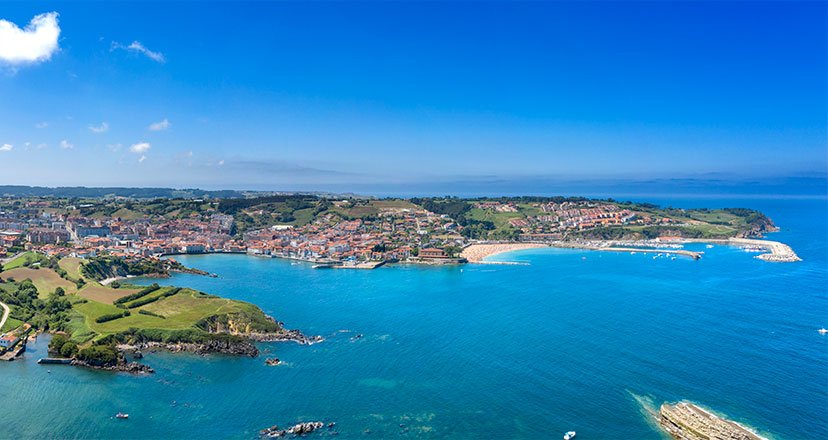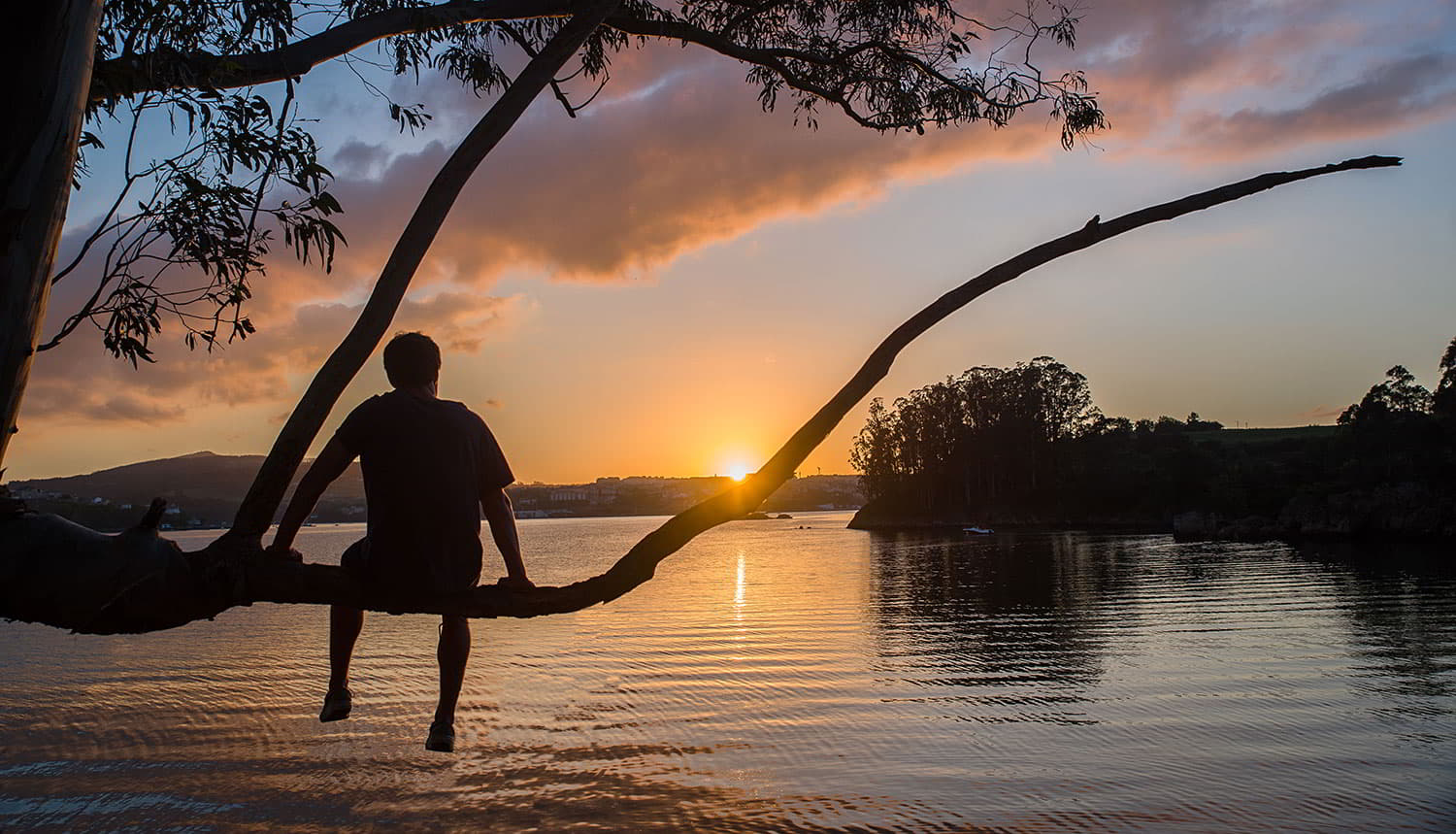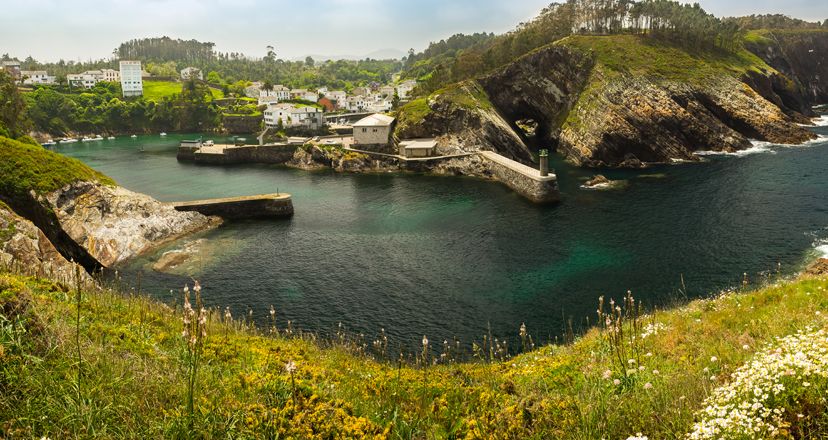Back What to see in Puerto de Vega
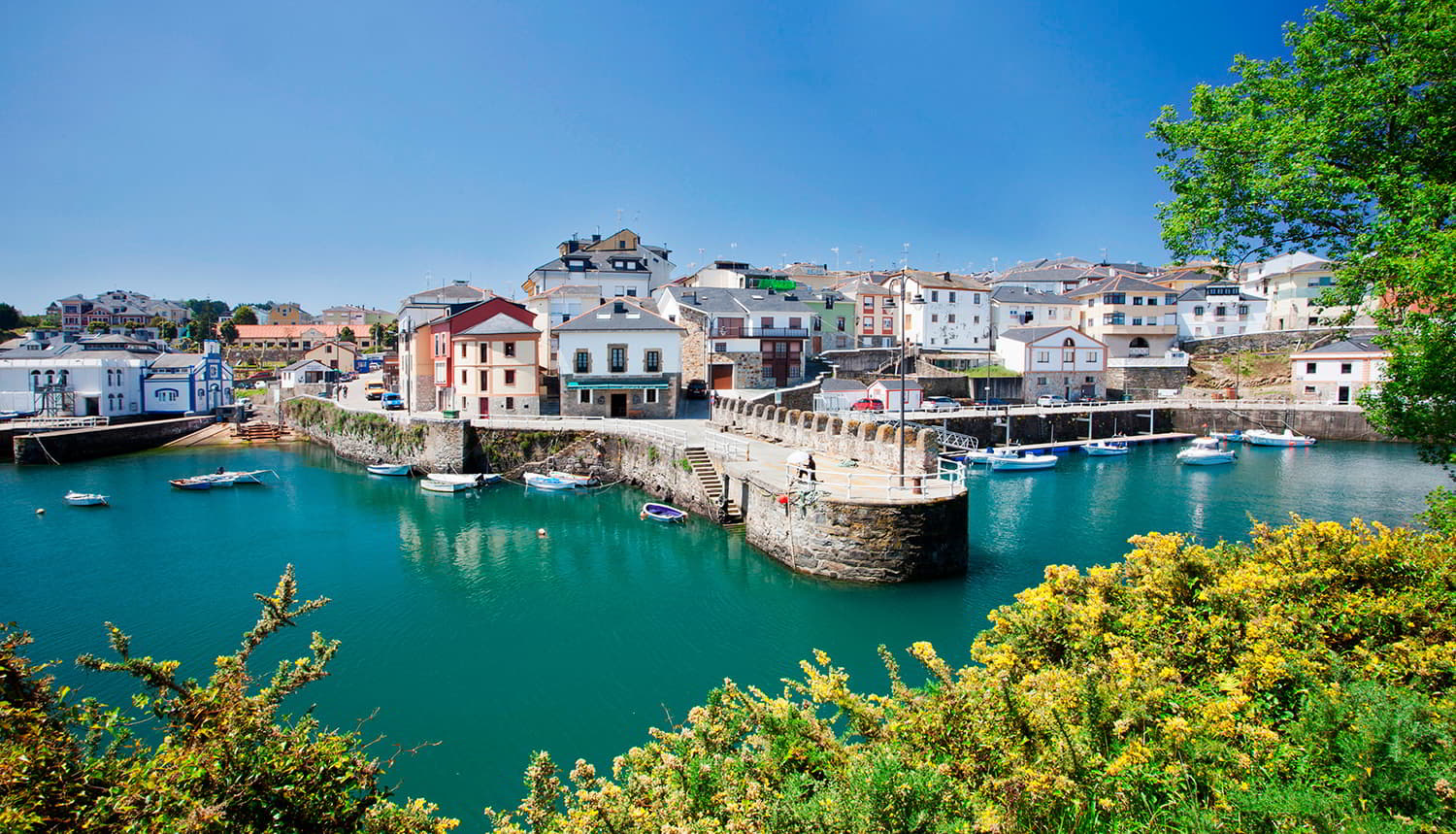
Puerto de Vega, one of the most beautiful seaside towns in Asturias
Puerto de Vega is one of the most beautiful villages in western Asturias. Seafaring tradition and history go hand in hand in this Exemplary Town of Asturias, where the Cantabrian Sea plays a major role.
Puerto de Vega, in the council of Navia, is a picturesque village of whaling origins and Indian airs in western Asturias, where Gaspar Melchor de Jovellanos spent his last days.
It was elected "Exemplary Town of Asturias" in 1995 and three years later, "Most beautiful town of Asturias", titles that attract tourists who, without being able to help it, remain enraptured while enjoying a town where the Cantabrian Sea continues to be the main protagonist.
Past and present linked to the sea
Puerto de Vega has a special charm, an irresistible old flavour. The centuries-old battlements and the two 18th century cannons on the Paseo del Baluarte remind us that we are in a territory where piracy and invasions were frequent. They were even useful against Napoleon's troops in the War of Independence.
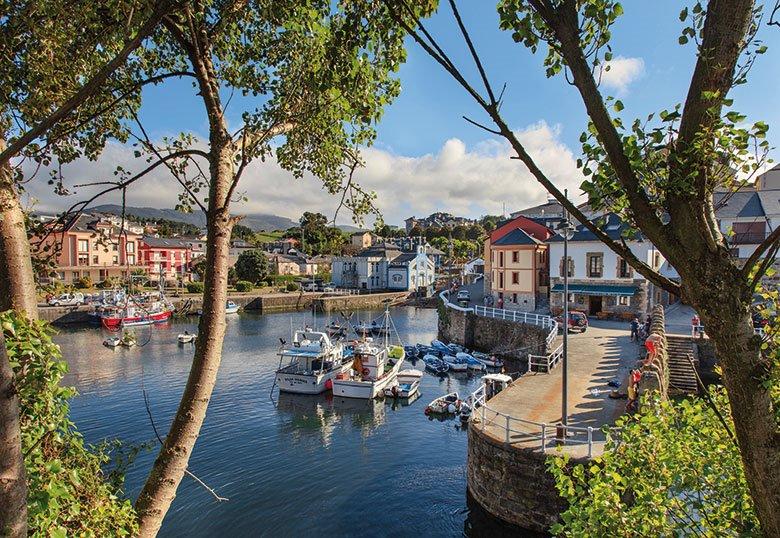
The strategic location of Puerto de Vega made it a key point for the maritime transport of goods between the 17th and 19th centuries. For this reason it was the coastal port chosen to establish the first customs office in Asturias.

To pay homage to his long seafaring career , they recreated the old seamen's table at the Mirador de La Riva (1992). There we find a harpooner from 1854, a mural depicting the extinct whaling in the Bay of Biscay, two enormous whale jaws weighing some 30 tons, and the oldest whaling contract on record.
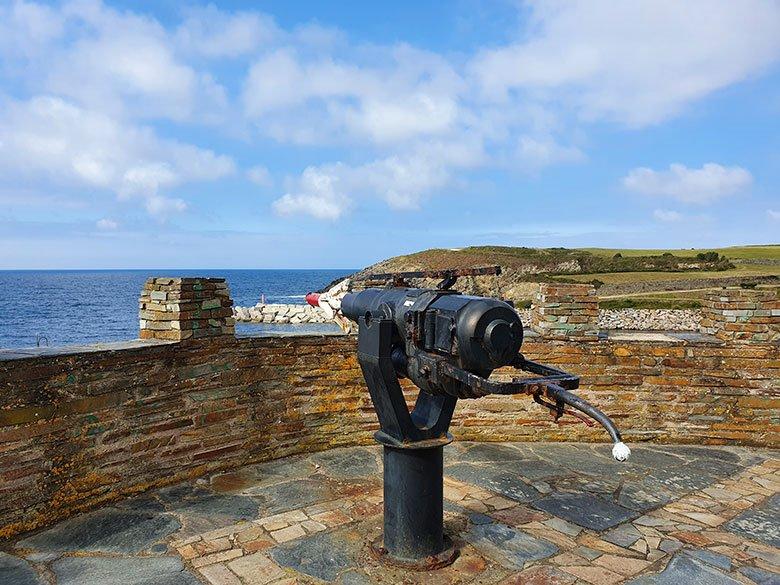
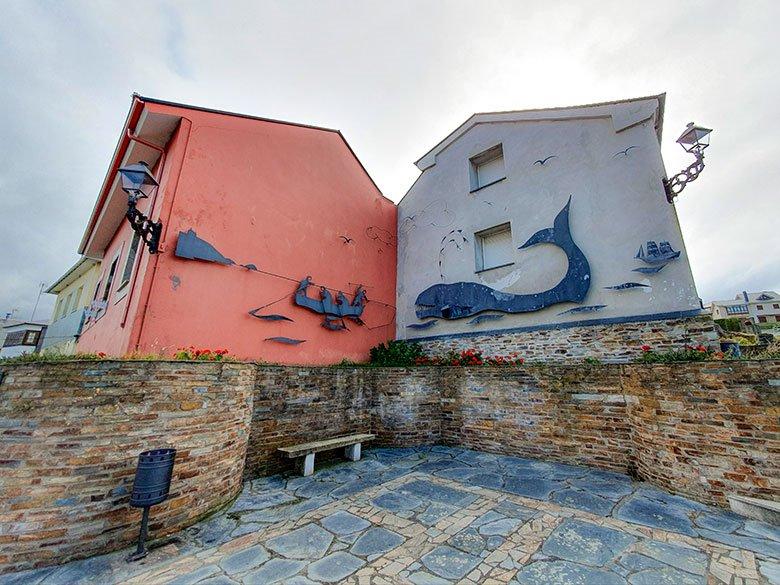
The canning industry also developed in Puerto de Vega. The La Arenesca factory, founded in 1925 by Rosalindo González, houses the Museum of the History of the Sea. In a pleasant visit we review the hard - and uncertain - life of the fishermen, and we discover the role played by women on land, for example, weaving nets, repairing pots and, of course, in the canning and salting factory.
This same building also houses the Juan Pérez Villamil Ethnographic Museum, where you can learn about 8 typical trades of the Asturian rural world (cesteiros, ferreiros, filandeiros, etc.) that form part of the great cultural and ethnographic legacy of this land. Both museums are free of charge.
But Puerto de Vega is also present and future. The building of the Fishermen's Guild of Nuestra Señora de La Atalaya and the colourful boats of its fishing fleet, in which they go out to fish every day, confirm that the sea continues to be the essential engine of its local economy.

The beautiful fish market of Puerto de Vega (1928) continues to auction fish, and is the main distributor of goose barnacles on the Asturian coast. A good part of the catch can be tasted in the town's restaurants. Rice with bugre, fish stews, seafood stews and fresh seafood are its star dishes.
One of the essential visits in Puerto de Vega is the one offered at the fish market. You can witness a live auction, and discover many curiosities about the art of fishing in the didactic classroom. Guided tours take place from Monday to Friday in the morning and afternoon, last 1 hour and cost 3€/adult (from 12 years old). It is advisable to book on 985 648 513.
The historical heritage of Puerto de Vega
Something that is striking in Puerto de Vega is the distribution of space. The streets that start from the Plaza de Cupido, the origin of the village, keep a certain order. It is really easy to stroll around the village and discover its interesting heritage.
The Casino stands out, an Indian building built in 1931, where films were shown and plays were performed.

We should also mention the Chapel of Nuestra Señora de La Atalaya, founded by the Sailors' and Merchants' Guild in the early 17th century, after finding a carving of the Virgin floating in the water.
And of course, the Church of Santa Marina, declared a Historic-Artistic Monument in 1982, and popularly known as "the cathedral of the rural Baroque of western Asturias". In this church, in front of the main altar, was the tomb of Gaspar Melchor de Jovellanos, until he was transferred to his hometown, Gijón.
This illustrious figure died of pneumonia in the mansion of Antonio Trelles Osorio in 1811. The commemorative plaque and the coat of arms on the façade mark the building where this historic event took place.

If you are travelling with children, you will be pleased to know that next to the old cannery is the beautiful Benigno Blanco Park. It bears the name of an emigrant from Porto Vecchio, who ended up being mayor of Havana. His family donated the land to turn it into a social space, and the work was paid for by the neighbours.

In this area they have created a green space with a very well cared landscaping, and a children's area awarded with the "Bronze Swing" in 2014. This award is given to those parks that are accessible, safe and sustainable.
Stay a few days in Puerto de Vega!
What better way to enjoy the "slow life" of western Asturias than spending a few days in Puerto de Vega! An ideal village to disconnect from routine, staying in a rural hotel or in an Asturian manor house.
Less than 8 kilometres away, you can visit the town of Navia, capital of the council. If you are a hiking enthusiast, don't hesitate to follow the Senda Costa Naviega. It is a simple, undemanding coastal route that passes through beautiful spots such as Frexulfe Beach, one of the wildest beaches in Asturias.
Another nearby point of great importance is the Barayo Partial Nature Reserve, where our slogan, "Natural Paradise", is more than justified.

Subscribe to our newsletter and take advantage of offers, discounts, and news
Subscribe


